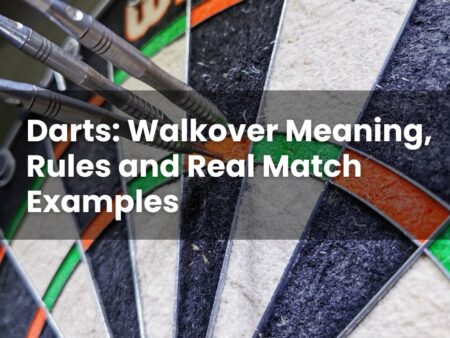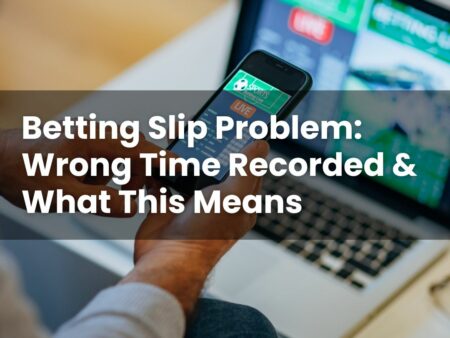Nearly every football transfer window sparks debate about who might move clubs next.
Betting on player transfers turns that speculation into a market, where you can place a wager on where a player could officially sign.
This guide explains exactly how those markets tend to work, how bookmakers decide the odds, and what affects them. It’s written to help you understand the basics, how to read the numbers, and what to think about before you take part.
By the end, you’ll better understand how transfer odds are formed — and why, even when a move seems certain, nothing is guaranteed until it’s officially confirmed.
What Does Betting on Transfers Mean?
Betting on football transfers means placing a wager on which club a named player will officially move to next, or whether they will remain where they are. Instead of predicting a match result, you are betting on an off-pitch event: a player’s transfer.
For example, a market might be titled “Next Club for Player X”, listing several potential destinations, each with different odds. If you back one club and the player later signs for that club — as defined in the bookmaker’s settlement rules — the bet is paid as a winner.
Bookmakers usually open these markets when credible reports or speculation start circulating, often during or leading up to a transfer window.
Each operator defines its own rules on when a transfer is considered complete, such as whether a loan move counts, or whether the player must be officially registered. Be sure to read those market terms before placing a bet.
How Do Bookmakers Set Transfer Odds?
Bookmakers use a mixture of analysis, information sources, and trading data to decide the odds for each possible transfer. Odds are not random guesses; they reflect a bookmaker’s estimated probability that a move will happen.
Their pricing is influenced by several factors:
- Reliable information – official club statements, manager interviews, or reports from credible journalists can shift prices quickly.
- Betting activity – when many bettors place money on one outcome, that price often shortens (meaning a lower potential return) to try and limit the bookmaker’s exposure.
- Market comparison – bookmakers track competitors’ prices to stay competitive and avoid large discrepancies.
- Player and club situation – contract length, buy-out clauses, team finances, and player form all affect how likely a move may appear.
Because transfers are unpredictable, odds can change multiple times a day. A player strongly linked with one club can suddenly drift in the market if negotiations stall or another club enters the race.
Key Factors That Influence Player Transfer Markets
Several key developments can make transfer markets move:
- Credible news or confirmation – a statement from a club, manager, or agent carries far more weight than online gossip.
- Contract status – a player nearing the end of a deal is more likely to move, while those on long contracts often have fewer realistic options.
- Performance and playing time – players not starting regularly are more likely to seek a move elsewhere.
- Financial position of clubs – clubs under spending restrictions may sell players, while wealthier clubs can usually afford larger fees.
- Transfer window timing – prices often fluctuate most when deadlines approach, as deals are finalised or collapse at the last moment.
- Betting flow – odds react to where money is being placed. High volumes on one outcome can cause odds to shorten.
All these influences combine to form live markets that evolve with each development in real life.
Which Football Transfers Can You Bet On?
Transfer betting is generally limited to well-known players, as there needs to be sufficient information for bookmakers to form a market. Most listed players are those in the Premier League or other major European leagues.
Markets are often created around:
- High-profile transfers, such as when a top striker or midfielder is rumoured to move.
- Players nearing contract expiry, where a move seems more likely.
- Big managerial changes, which may also affect player movement.
Some bookmakers may also include an “Any Other Club” option, covering all teams not listed individually. Settlement depends on each bookmaker’s rules — for instance, whether the move must be permanent or if a loan qualifies. Not every site offers these markets, and those that do may vary in how they define outcomes.
How to Read and Understand Transfer Odds
In the UK, odds are normally displayed as fractional (for example, 5/1 or 2/1) or decimal (for example, 6.0 or 3.0).
- Fractional odds show potential profit relative to stake. For instance, 5/1 means that for every £1 you stake, you could win £5 profit if successful, plus your £1 stake returned.
- Decimal odds show total potential return per £1 staked. So, 6.0 means a successful £1 stake would return £6 in total (£5 profit plus your stake).
Shorter odds indicate a higher perceived likelihood of a move, whereas longer odds suggest a less probable outcome. However, bookmakers include a margin in their pricing, so the combined implied probabilities of all options exceed 100%. This margin ensures the bookmaker’s built-in advantage.
It’s important to remember that odds express probability, not certainty. Even if a player’s odds shorten dramatically, it doesn’t guarantee the move will happen — it only shows that more people, or the bookmaker, currently view that move as more likely.
Popular Markets for Transfer Betting
There are a few popular ways to bet on player and manager transfers. Knowing these can help you read the boards more confidently when the window opens.
Next Club Markets
This is the most common transfer market. You pick which club you think a specific player will join next. If that transfer is officially completed according to the bookmaker’s settlement terms, the bet wins.
For example, if a player’s market lists Manchester United at 3/1 and Arsenal at 8/1, the bookmaker views United as the more likely destination. These odds have the potential to shift rapidly.
Player to Stay or Leave Markets
This market is simpler. You’re betting on whether you think the player will stay at their current club or leave by the end of the transfer window. You don’t need to name the destination. It’s usually settled based on the player’s registration status once the window closes.
Manager Transfer Specials
Manager markets work much like player ones. You might see odds on who will become the next permanent manager of a specific club, who could be the first to leave their post in a league, or which club a manager might join next. Because managerial changes are often sudden, these markets can move quickly if a team’s performance dips or a vacancy appears.
Are Transfer Betting Markets Reliable?
Transfer betting markets can be entertaining to follow, but they are speculative. Odds are based on probabilities and information available at the time, not guaranteed outcomes.
Negotiations can collapse, medicals can fail, or players may change their minds. Even the strongest favourite can lose value if another club makes a late offer.
Different bookmakers may interpret or settle markets differently, so be sure to check their terms before betting. A transfer bet is usually settled once the move becomes official — for instance, when the club publicly announces the signing and relevant paperwork is completed.
If you decide to place a bet, use a licensed UK operator and set a clear budget beforehand. Only gamble with money you can afford to lose. Remember, gambling outcomes involve an element of chance, and no method or strategy can guarantee returns.








